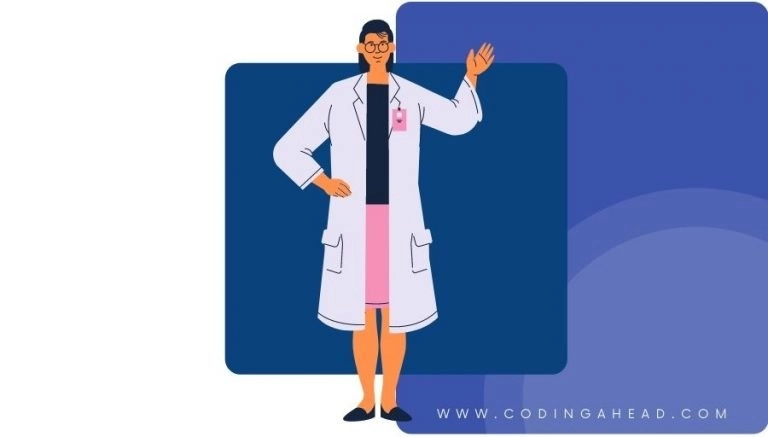How To Use CPT Code 91010
CPT 91010 is a code used for esophageal motility studies with interpretation and report. This article will cover topics such as the description, procedure, qualifying circumstances, when to use the code, documentation requirements, billing guidelines, historical information, similar codes, and examples of CPT 91010 procedures.
1. What is CPT 91010?
CPT 91010 is a medical code used to describe a specific diagnostic procedure that involves the analysis of esophageal muscle pressure and movement in patients with gastroesophageal reflux disease (GERD) or other esophageal disorders. This code is used to bill for the esophageal motility study, including the interpretation of the findings and the preparation of a report.
2. 91010 CPT code description
The official description of CPT code 91010 is: “Esophageal motility (manometric study of the esophagus and/or gastroesophageal junction) study with interpretation and report.”
3. Procedure
The 91010 procedure involves the following steps:
- The patient is appropriately prepped and anesthetized.
- The provider inserts a catheter with a manometer into the nostril.
- The catheter is gradually moved into the esophagus, with the patient gulping to help open the esophagus.
- The patient is asked to swallow 10 to 20 sips of water, during which the computer records the pressure, force, and pattern of esophageal muscle contractions.
- The provider may also take readings while the patient swallows a light meal.
- The electrodes on the catheter transmit data to a recording device.
- The catheter is removed.
- The provider analyzes the recorded data and prepares a written interpretation and report.
4. Qualifying circumstances
Patients who are eligible to receive CPT code 91010 services are those experiencing symptoms or conditions related to esophageal disorders, such as GERD, dysphagia, or achalasia. The procedure is typically performed when other diagnostic tests, such as endoscopy or barium swallow, have not provided sufficient information to determine the cause of the patient’s symptoms.
5. When to use CPT code 91010
It is appropriate to bill the 91010 CPT code when a provider performs an esophageal motility study with interpretation and report for a patient with symptoms or conditions related to esophageal disorders. The code should be used only when the entire procedure, including the interpretation and report, is completed by the provider.
6. Documentation requirements
To support a claim for CPT 91010, the following information should be documented:
- Patient’s medical history and symptoms related to esophageal disorders
- Results of previous diagnostic tests, if any
- Details of the esophageal motility study procedure, including the number of swallows and any additional tests performed
- Interpretation of the findings, including any abnormalities or patterns observed
- Prepared report with the provider’s conclusions and recommendations for further treatment or management
7. Billing guidelines
When billing for CPT code 91010, it is important to follow the appropriate guidelines and rules. If only the professional component of the service is being reported, modifier 26 (Professional component) should be appended to the code. If only the technical component is being reported, modifier TC should be appended, unless the hospital provided the technical component. In that case, do not append modifier TC. Do not append a professional or technical modifier when reporting a global service in which one provider renders both the professional and technical components.
8. Historical information
CPT 91010 was added to the Current Procedural Terminology system on January 1, 1990. There have been several updates to the code since then, with the most recent change occurring on January 1, 2012, when the descriptor was updated to include “2-dimensional data.”
9. Similar codes to CPT 91010
Five similar codes to CPT 91010 and how they differ are:
- CPT 91020: This code is used for gastric motility studies, rather than esophageal motility studies.
- CPT 91022: This code is for a duodenal motility study, focusing on the duodenum instead of the esophagus.
- CPT 91030: This code is for an esophageal acid perfusion test, which measures the esophagus’s response to acid exposure.
- CPT 91034: This code is for an esophageal pH monitoring study, which measures the pH levels in the esophagus over a period of time.
- CPT 91037: This code is for an esophageal impedance study, which measures the flow of substances in the esophagus.
10. Examples
Here are 10 detailed examples of CPT code 91010 procedures:
- A patient with GERD undergoes an esophageal motility study to evaluate the severity of their condition and determine the appropriate treatment plan.
- A patient with dysphagia has an esophageal motility study to identify the cause of their swallowing difficulties.
- An esophageal motility study is performed on a patient with suspected achalasia to confirm the diagnosis and plan for treatment.
- A patient with a history of esophageal spasms undergoes an esophageal motility study to assess the frequency and severity of the spasms.
- An esophageal motility study is conducted on a patient with a suspected esophageal stricture to determine the extent of the narrowing.
- A patient with a history of esophageal surgery has an esophageal motility study to evaluate the success of the procedure and monitor for any complications.
- An esophageal motility study is performed on a patient with unexplained chest pain to rule out esophageal disorders as the cause.
- A patient with a suspected esophageal motility disorder undergoes an esophageal motility study to confirm the diagnosis and guide treatment decisions.
- An esophageal motility study is conducted on a patient with persistent regurgitation to determine the cause and plan for treatment.
- A patient with a history of esophageal cancer has an esophageal motility study to monitor for any recurrence or complications related to their treatment.


